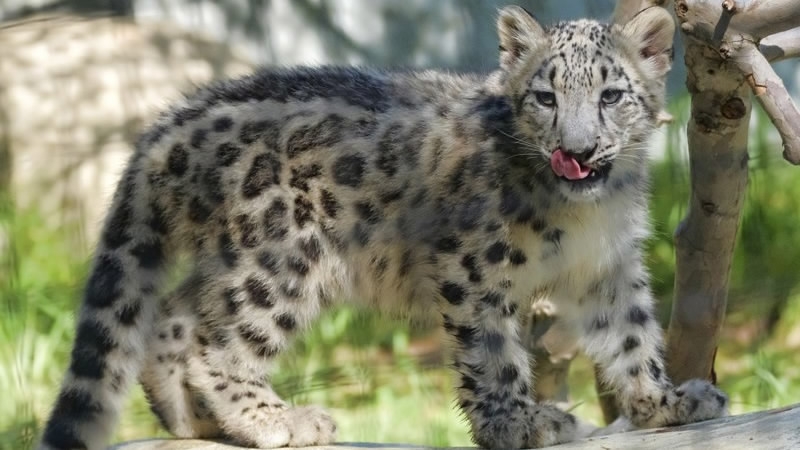
Animal
08:34, 15-Sep-2017
Snow leopard not endanger anymore, but not out of danger

International conservationists said on Thursday that the elusive snow leopard, which was facing an extremely high risk of extinction, has been upgraded to “vulnerable”.
But experts warned the new classification does not mean they are safe.
The animals still face serious challenges including poaching and loss of prey in their high Himalayan habitat.
“The species still faces ‘a high risk of extinction in the wild’ and is likely still declining, just not at the rate previously thought,” said Tom McCarthy, head of the snow leopard program at the big cat conservation group Panthera.

Snow leopards had been listed as endangered since 1972. /AP Photo
Snow leopards had been listed as endangered since 1972. /AP Photo
Snow leopards had been listed as endangered since 1972.
The reclassification announced Thursday by the International Union for Conservation of Nature, or IUCN, followed a three-year assessment that determined there are not fewer than 2,500 mature snow leopards in the wild, and that their numbers are not in steep decline – the two criteria for being considered “endangered.”
Using improved methods for assessing the cats’ population, experts estimated there are at least about 4,000 in the wild, though there could be as many as 10,000.
Scientists have managed to survey only a small fraction of the animal’s high-mountain range, an area covering some 1.8 million square kilometers (695,000 square miles) crossing into 12 countries in Asia.
Doing the research “is difficult,” said Peter Zahler, coordinator of the snow leopard program at the Wildlife Conservation Society, who was involved in the multi-agency team’s assessment. “It involves an enormous amount of work in some of the most remote and inhospitable regions of the world.”
New technologies, including camera traps and satellite collaring, are “giving us better information about where snow leopards are and how far they range,” he said.

Snow leopards face serious challenges including poaching and loss of prey in their high Himalayan habitat. /AFP Photo
Snow leopards face serious challenges including poaching and loss of prey in their high Himalayan habitat. /AFP Photo
Some positive developments included an increase in the number of protected areas, as well as stepped-up efforts by local communities to protect the animals from poachers.
Communities were also working to prevent cases of local herdsmen retaliating for lost livestock by building predator-proof livestock corrals, team member Rodney Jackson of the Snow Leopard Conservancy group said in a statement.
Still, the animals are hunted for their thick fur and bones. They also face declining numbers of wild prey, as domestic livestock have degraded grasslands.
Whether they might be impacted by global warming remains uncertain. But scientists agree the Himalayas are one of the world’s most susceptible regions to climate change.
“Saying snow leopards are now ‘vulnerable’ rather than ‘endangered’ doesn’t mean they’re safe,” Zahler said. “It doesn’t take much to make large predators disappear from landscapes. We’ve seen it happen over and over again around the world.”
Source(s): AP

SITEMAP
Copyright © 2018 CGTN. Beijing ICP prepared NO.16065310-3
Copyright © 2018 CGTN. Beijing ICP prepared NO.16065310-3